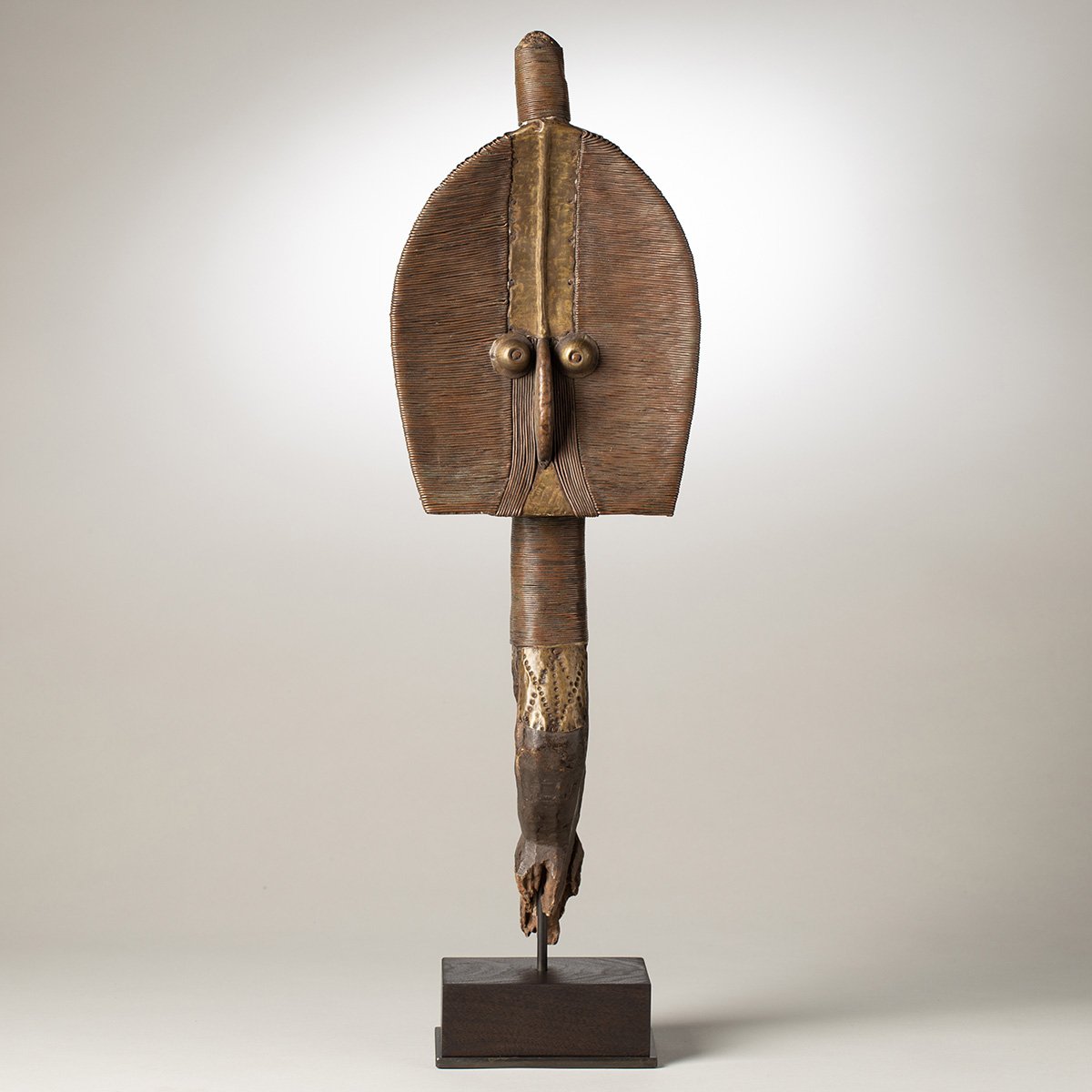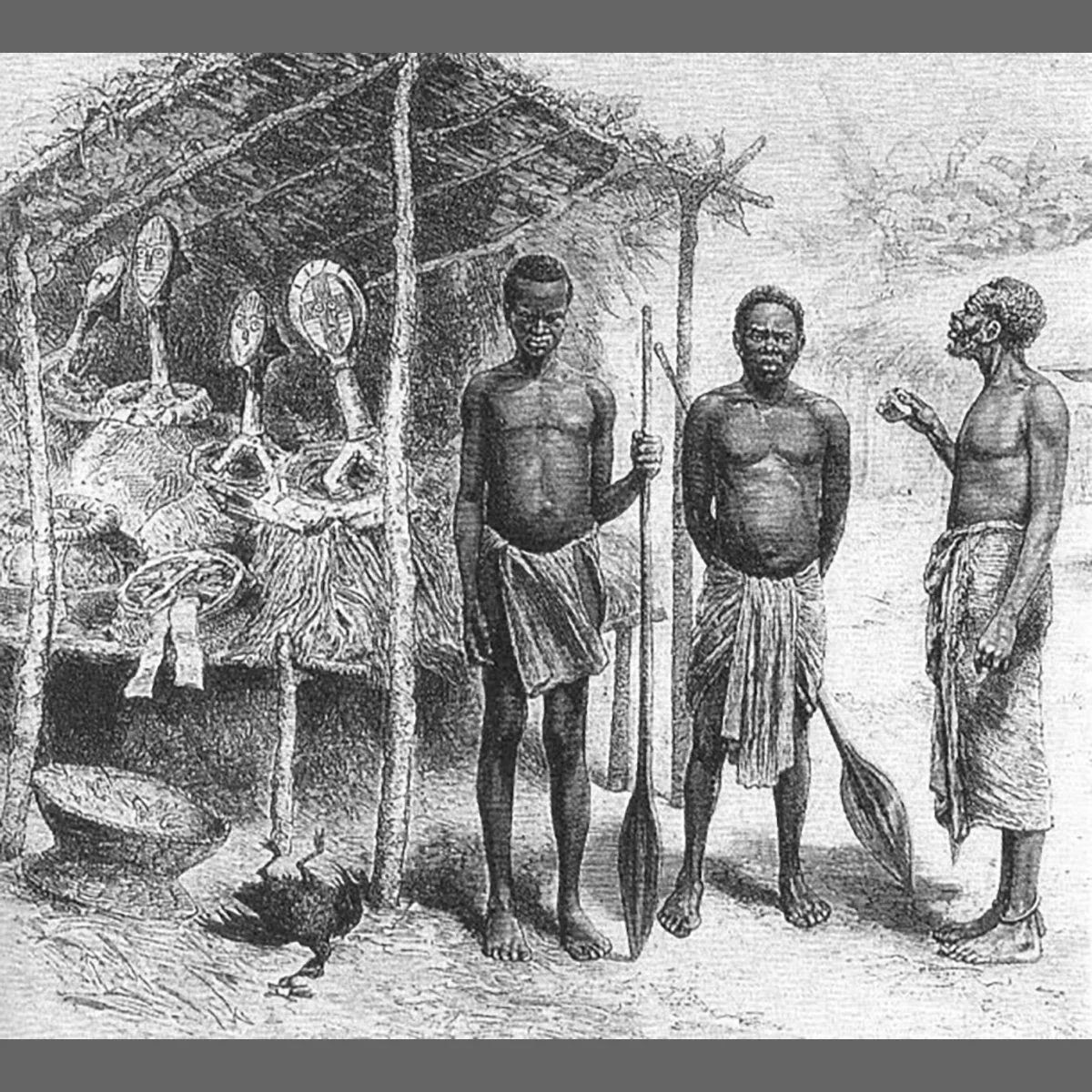 Image 1 of 10
Image 1 of 10

 Image 2 of 10
Image 2 of 10

 Image 3 of 10
Image 3 of 10

 Image 4 of 10
Image 4 of 10

 Image 5 of 10
Image 5 of 10

 Image 6 of 10
Image 6 of 10

 Image 7 of 10
Image 7 of 10

 Image 8 of 10
Image 8 of 10

 Image 9 of 10
Image 9 of 10

 Image 10 of 10
Image 10 of 10











Mahongwe Reliquary Figure - SOLD
Gabon
Wood, brass
Height 21 3/4
Provenance: James Conley, Los Angeles, CA
Tim Gurley, Pasadena CA
Private collection, Paris
An outstanding example with a old patina.
For similar examples see: Alain Chaffin and Francoise Chaffin, L' art Kota, Les de reliquaire, Meudon, 1979 pp. 78 and 323Warren M. Robbins and Nancy Ingram Nooter, African Art in American Collections, Survey 1989, Washington, D.C., 1989, p. 344, fig 892. Michael Kan, African Art: Masterpieces from Private Collections, Katonah, 1993 n.p. (listed)
Kota families in Gabon venerated their most influential ancestors with relics that included the bones and crania of high-ranking members. Local elders of this ancestor cult, called bwiti, commissioned highly stylized reliquary figures that were placed atop special basketry containers designed to hold the revered ancestral relics. These upright reliquary figures (mbulu ngulu) are sometimes called reliquary guardian figures for their role as guardians of the relics contained within. Their function was, however, more complex as they also served as potent agents of ancestral power in communal ceremonies and helped to ensure success in matters such as hunting, fertility and curing sickness.
Reliquary figures and their ensemble of ancestral relics also played an essential role in the communities’ initiation rituals that served to transfer important family stories and genealogical history. Several reliquary figure ensembles were often housed together inside a community enclosure and offered assistance and protection in shielding their communities from harm.
Gabon
Wood, brass
Height 21 3/4
Provenance: James Conley, Los Angeles, CA
Tim Gurley, Pasadena CA
Private collection, Paris
An outstanding example with a old patina.
For similar examples see: Alain Chaffin and Francoise Chaffin, L' art Kota, Les de reliquaire, Meudon, 1979 pp. 78 and 323Warren M. Robbins and Nancy Ingram Nooter, African Art in American Collections, Survey 1989, Washington, D.C., 1989, p. 344, fig 892. Michael Kan, African Art: Masterpieces from Private Collections, Katonah, 1993 n.p. (listed)
Kota families in Gabon venerated their most influential ancestors with relics that included the bones and crania of high-ranking members. Local elders of this ancestor cult, called bwiti, commissioned highly stylized reliquary figures that were placed atop special basketry containers designed to hold the revered ancestral relics. These upright reliquary figures (mbulu ngulu) are sometimes called reliquary guardian figures for their role as guardians of the relics contained within. Their function was, however, more complex as they also served as potent agents of ancestral power in communal ceremonies and helped to ensure success in matters such as hunting, fertility and curing sickness.
Reliquary figures and their ensemble of ancestral relics also played an essential role in the communities’ initiation rituals that served to transfer important family stories and genealogical history. Several reliquary figure ensembles were often housed together inside a community enclosure and offered assistance and protection in shielding their communities from harm.

